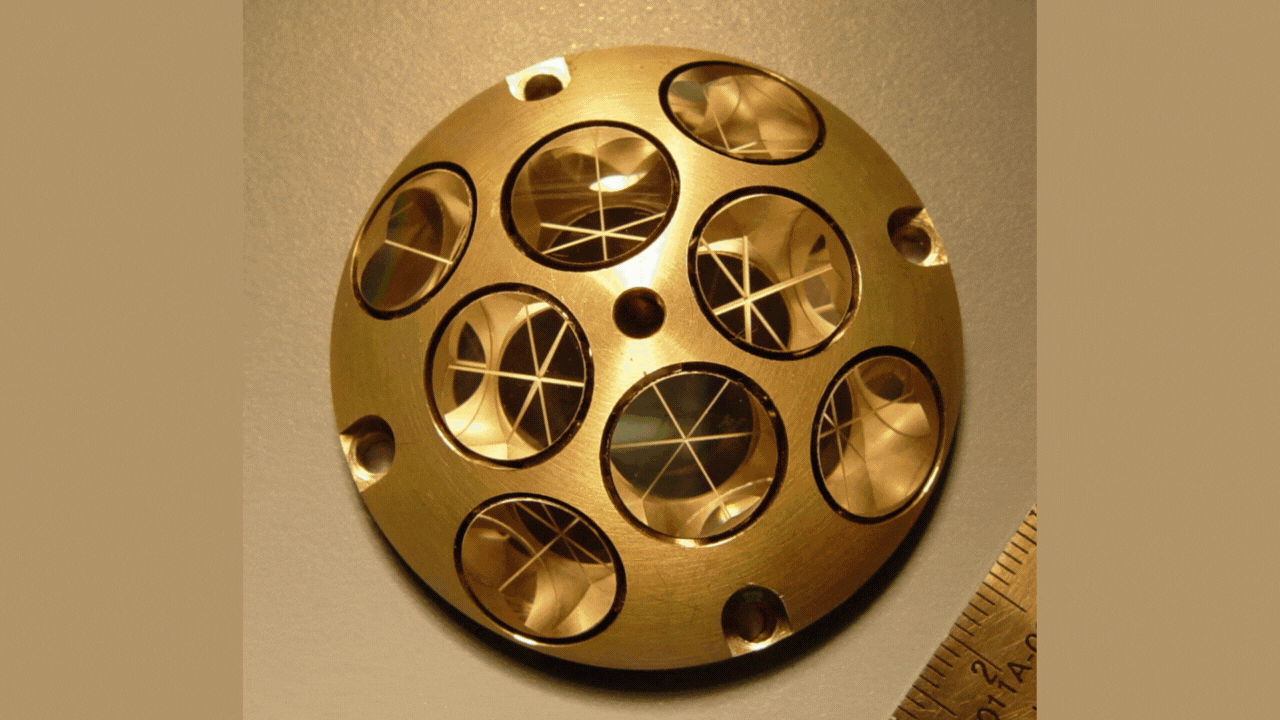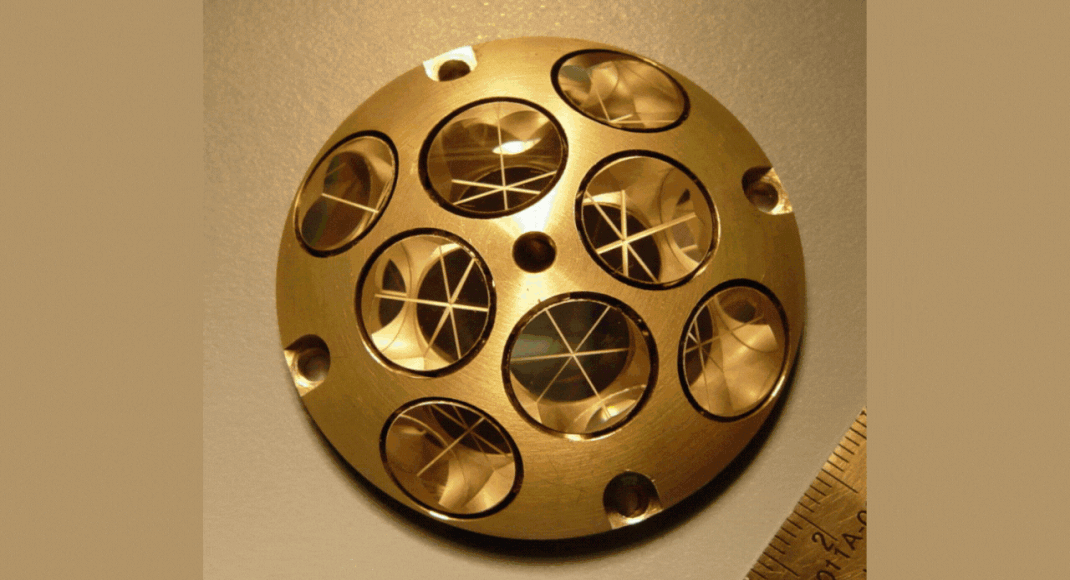
While three other payloads on Vikram, the Radio Anatomy of Moon Bound Hypersensitive ionosphere and Atmosphere (RAMBHA), Chandra’s Surface Thermo physical Experiment (ChaSTE) and Instrument for Lunar Seismic Activity (ILSA), have been turned on by Isro, LRA is an instrument built by NASA Goddard Space Flight Centre.
LRA is designed to use reflected laser light from orbiting spacecraft laser — typically a laser altimeter or light detection and ranging (lidar) — to precisely determine the location of the lander, as a fiducial (assumed as a fixed basis of comparison) marker, and the distance to that point on the lunar surface with respect to the orbiter.The retroreflectors reflect any light striking them directly back to the source. They can be tracked by an orbiting laser altimeter or lidar from a few hundred kilometres.
According to NASA, the LRA on Vikram consists of eight circular 1.27-cm diameter corner-cube retroreflectors mounted on a 5.11cm diameter, 1.65cm high hemispherical gold-painted platform. Each of the retroreflectors points in a slightly different direction, and each has a maximum useful light incidence angle of about +-20 degrees. The Total mass of the LRA is 20 grams, it requires no power.
To Prevent Interference
David R Williams, acting head, NASA Space Science Data Coordinated Archive, told TOI: “LRA is not planned to be used for ranging until after the Chandrayaan mission is complete.”
While TOI had sent questions to both Williams and Xiaoli Sun, the principal investigator of LRA, Williams responded to the queries as the designated person to handle the same.
On why LRA won’t operate until Chandrayaan-3 mission is complete, Williams, quoting Sun and other LRA team members, said it is to make sure it does not interfere with the operation of the optical equipment (cameras and spectrometers) on the lander.
LRA Network For Future
“The LRA will allow very accurate determination of its position on the surface from an orbiting spacecraft. This can then be combined with knowledge of orbiting spacecraft’s position to give an accurate measurement of the distance from LRA to Earth, which can help understand details of Moon’s movement relative to Earth. Once a number of LRAs are put on the lunar surface they can serve as fiducial markers and to create a geodetic (geodesy for surveying) network on the surface. This will aid in planning precise landings of future missions,” Williams said.
Given that the LRA ranging (operations) can only be done through an orbiter equipped with a laser altimeter, Williams said, the only orbiter that can do laser ranging at present is NASA’s Lunar Reconnaissance Orbiter (LRO), “using its laser altimeter, LOLA”. He said there was no confirmation on whether the LRO has passed over Vikram as on date.
“LRAs should last a long time, so future missions will be able to use them. The more LRAs you have, the better the (geodetic) network. They are planned for many future missions, but there really isn’t a minimum number they need to have,” Williams added.
Source link

